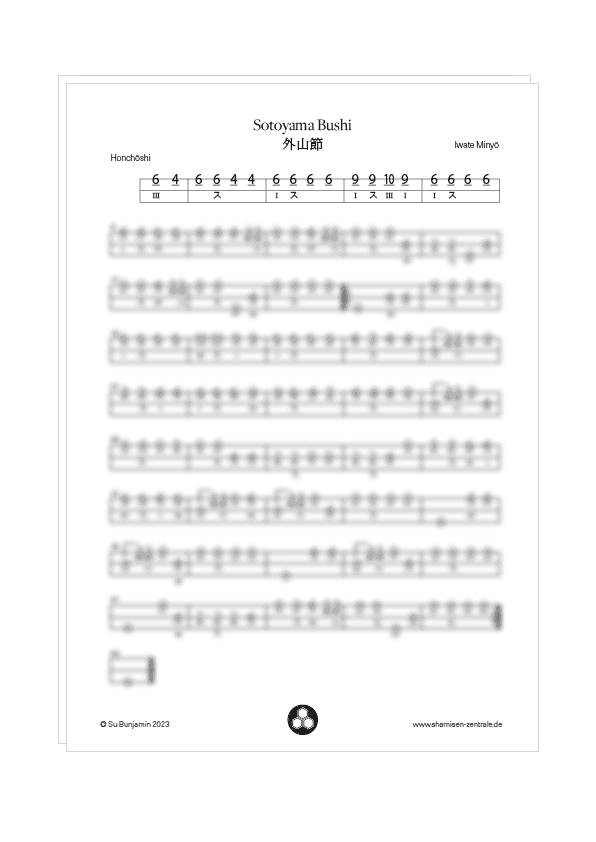Sotoyama Bushi
This is what you’ll get:
- 2 pdfs: tabulature notation in two versions (with and without maebachi)
- mp3 play along file
Song specifications:
- beginner to advanced beginner level
- honchōshi tuning
1,95 €
Details
Get the notation for Sotoyama plus a super useful play along file to help you learn and practice the song!
The notation comes in two different versions: with and without maebachi indication. Why? Because it can be easier to play the maebachi when it’s indicated in the notation, but if you don’t play this technique yet, it can be distracting when you see additional signs in the notation that you don’t use.
You can download the files from your customer account page after the purchase – a link will be provided in the order confirmation e-mail.
Wanna have a short listen to see if you like the tune? Here’s the beginning of Sotoyama Bushi:
About the song:
Sotoyama Bushi is a traditional Japanese folk song (minyo) from Iwate prefecture. It’s also popular among Shakuhachi players. As every folk song, it comes in countless variations. This version is written out for shamisen in bunkafu (tabulature) notation. This version is without lyrics and is suited for beginners who want to try out the basic techniques in a relaxed song. The rhythm is very steady and the main technique is sukui (upstroke). There’s also a couple of oshibachi and hajiki. I recommend omitting the hajiki at first because they’re just ornamentations and are supposed to sound and feel easy 🙂 If they hinder your flow, simply cut them out and the song will sound just as lovely! If you want to further level-up, you can add maebachi-technique to fully bring out the dynamic of this light-footed Minyo piece.
- Tuning: Honchōshi
- Techniques: sukui, hajiki, oshibachi
Note: A second pdf is provided with colored markings indicating maebachi.
Tuning:
In every tuning, the strings are tuned in a certain relation to each other. For folk songs, there’s no fixed rigid tuning to a definite pitch (in contrast, the A-string on the violin is always tuned to 440 or 442hz) but what’s most important is how the strings are tuned in relation to each other.
A good rule of thumb is to tune your instrument over the base of C. This means, the big string will be tuned to C and the other strings according to the tuning of the song:
Honchōshi: C-F-C
Niagari: C-G-C
Sansagari: C-F-Bb
Access to the pdf and mp3:
Please note that this item is downloadable once only – just as receiving a physical copy of the scores would be. Consider it a “direct delivery” 🙂
After the purchase, you can download the file from your account page under “downloads” or via the link in your order confirmation email.
Make sure you save your file in an easy to locate directory. Please don’t hesitate to contact us via email if you need further assistance.
